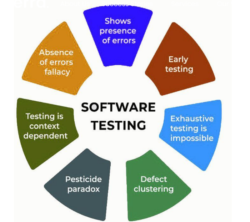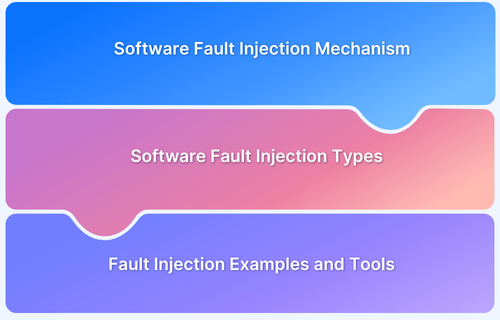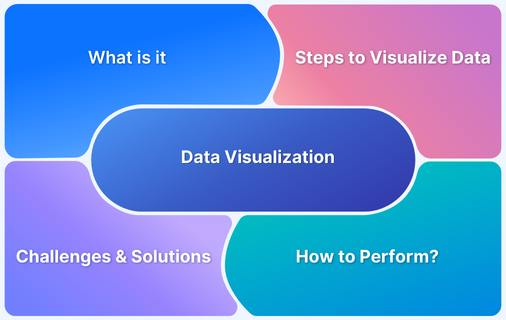Submit RevisionSoftware transforms phenomenally with a colossal quantum of codes and multiple programming languages. It is becoming inevitably intricate and multilayered. The ever-changing user needs contribute to software being increasingly complex. Numerous bugs typically follow from this level of complexity. Profound software testing needs an efficient tester to find, record, monitor, and fix them.
This indeed calls for thorough and rigorous web application testing at different stages.
This process can be easier and more convenient with the proper plan and resources. To solve this, let’s understand what defect clustering is, its principles, defect types, and different methods of defect prevention.
What is Defect Clustering?
The term “defect clustering” refers to the situation in which a small number of modules include most of the reported flaws and operational failures.
On the other hand, defect clustering and pesticide paradox relates to the circumstance in which if the software test cases are repeated, eventually, the same test cases will stop discovering new bugs.
Let’s take a quick and closer look to know what is defect cluster and how to overcome defects.
It’s not uncommon for bugs to appear randomly throughout an application. Defect clustering in testing indicates that a small subset of features has generated the bulk of application quality problems.
Defect clustering may be caused by:
- Older code prone to breaking,
- New features that go through updates,
- Erratic third-party integrations.
Whatever the cause, being able to spot regions of your product that are prone to defects is crucial.
Systematic and structured software test estimation techniques give you an unwavering testing experience on browsers without compromising on simulators and emulators.
Defect Clustering Principle
Defect clustering in software testing refers to a non-uniform distribution of defects throughout the application. It is instead concentrated in a few select areas of the application. This is true, in particular, for large systems, where errors made by developers change in size and complexity. Owing to this, certain modules may be negatively impacted.
The Pareto principle, which claims that 20% of the modules account for 80% of bugs, is the foundation for this idea.
- Most testers have noticed this phenomenon brought on by a tricky or complex section of the code.
- When risk assessments are made for planning tests, the test designers frequently use this information to concentrate on these areas, sometimes referred to as hotspots.
The right software testing strategy is imperative to ensure that all sorts of derailers and flaws are taken care of comprehensively
Types of Defects
Defect management can be categorized as high, medium, or low-priority issues regarding business reasons. Since they impact business requirements, defects with a high priority should be repaired first.
1. Critical Issues
Critical issues are those:
- that need to be fixed right away,
- have an impact on the product’s essential operation,
- and may lead to system crashes or prevent software from operating.
2. Major Issues
Major issues impair primary system operations but do not result in the complete system failing.
3. Minor Issues
Minor issues can negatively affect user experience even though they don’t significantly disrupt system functionality or workflow.
4. Trivial Issues
Trivial issues are those that don’t affect how the system works and can be overlooked, such spelling errors.
A measure known as defect probability describes the likelihood that a problem will arise and be noticed by end users. There are high, medium, and low likelihood defects based on this criterion.
Detecting defects along the lines of efficient software testing needs you to ramp up the software testing procedure.
BrowserStack can ramp up the SDLC and scale up enterprise testing through:
- Regression Testing with Selenium
- Visual Regression with WebdriverIO
- Visual Regression with Playwright
- Visual Regression with Cypress
- Parallel Testing with Selenium
Additional Classification of Defects
Additionally, there is a classification of defects in software testing, which are as follows:
Extra defects: A request made of the product but wasn’t provided by the client.
Normally, this is a deviation from the project specification, but it could also be a feature that the end customers have asked for. However, it is regarded as defective because it doesn’t adhere to the standards in place.
Missing Defects : The client’s request was not carried out. Another deviation from the specs is that this feature shouldn’t be implemented following the specification. It might also imply that the client’s request wasn’t properly noted.
Wrong Defects: These are the falsely carried out requirements. Actually, misunderstandings between the client and the project team may be to blame for this fault.
Read More: How to Write a Good Defect Report
Defect Prevention Methods and Techniques
Defect prevention is essentially a strategy to ensure that previously discovered flaws don’t recur.
- The coordinator is primarily accountable for promoting simple team member communication, planning, developing defect avoidance guidelines, etc.
- The coordinator’s key duties include leading efforts to prevent defects, facilitating meetings, facilitating communication between the team and management, etc.
- Different approaches or actions are typically used to accomplish and finish the aim.
Methods of Defect Prevention
There are various strategies for defect avoidance that are often used over a lengthy period. The following are these techniques or activities:
1. Software Requirement Analysis
Errors in software designs and requirements are the primary cause of problems in software products. Both software requirements and design are crucial, and both should be thoroughly examined. Software requirements are generally seen as an essential component of the SDLC.
These specifications outline the functionalities and features of the target product while also communicating what users should anticipate from software products.
As a result, it is imperative that testers and developers fully comprehend software requirements. Otherwise, there is a chance that a problem or defect will arise during the development process. It is crucial to assess and evaluate needs more appropriately and correctly.
Follow-Up Read: How Impact Analysis in Testing improves Release Cycles
2. Defect Review and Inspection
Both review and inspection are crucial and necessary components of software development. They are regarded as potent instruments that may be used to spot and eliminate flaws if they are there before they happen and affect production.
To satisfy various needs, code review and inspection are available in various levels or phases of fault prevention. They are utilized in all techniques for software development and upkeep. Self-review and peer review are the two different kinds of reviews.
3. Defect Analysis
Once defects have been found, identified, and corrected, step back and consider the big picture.
Defect analysis considers information on particular defects, defect priorities, product problems, history of defect resolution, developers involved, and other factors.
- It is crucial to ensure that identical mistakes don’t occur again in future projects.
- Gather information on critical errors and the necessary corrective action, then communicate it with the appropriate teams.
- Defect analysis is supported by the QA process, which nearly always results in a better-functioning team.
Implementing analysis as a required component of defect management could shape future development procedures to prevent errors from occurring in the first place or aid in improving resolution techniques.
4. Defect Logging and Documentation
After a thorough examination and evaluation, records about flaws should be kept to describe each one simply. This record can also be utilized to understand flaws better. One can only take the necessary and effective steps to address a specific defect if they have gained knowledge and comprehension of it, preventing it from progressing to the next stage.
With testing being a crucial element for software development, you need access to a seamless and robust testing platform to ensure that the errors are rightly reflected.
Moreover, with many devices and browsers floating in the market, testing needs to be speedy, precise and efficient.
Summing Up
The entire software development process should adhere to the defect management approach, not just specific testing or development activities. If a defect is identified during the testing phase, the question of what will happen to the other defects still present in the system and could eventually lead to system failure can be posed.
Therefore, all processes, including inspection, the static testing, review process, etc., need to be strengthened. Everyone working on the project needs to take the process seriously and help where needed. Also, ensure that it is under the purview of both manual testing and automation testing on real devices.







